|
This is my setup. Nothing is on the ground but the mat and table for my paint box. |
I applied the paint with a rag, this took 1 hour.
|
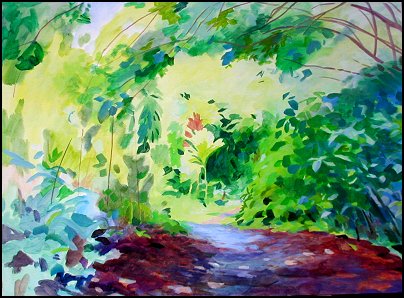 Day 2, 3 hours and just about 100% coverage.
|
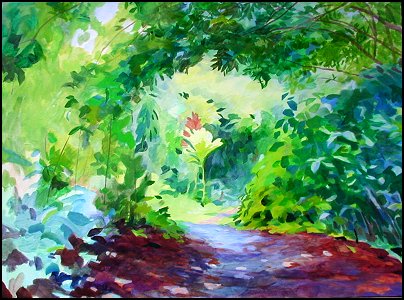 Day 3, One and a half hours painting time.
|
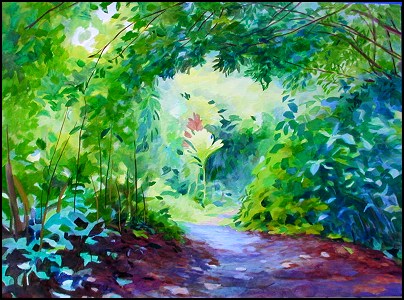 Day 4, Today was the best day yet, all sun. VERY unusual here in Nahiku.
Today I worked on the shadow's blue reflected colors, the foreground on the left and right and middle ground in the middle and redefined the branches. 2.5 hours.
Working this alkyd medium is really great. It's the closest thing to my pet acrylics I have found. Really it's the best of both worlds. The top advantage is one coat of a light opaque color will cover any under color. With acrylics you must first pre-coat an area with white before you change colors because acrylics are not as dense and opaque. A disadvantage would be waiting 3 hours to over paint or glaze an area as opposed to acrylics 3 minutes. |
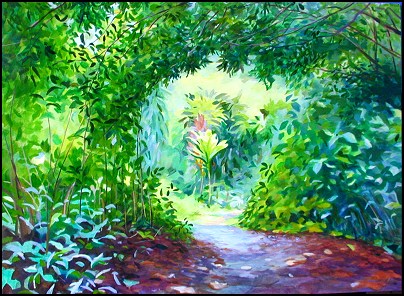 Day 5, 1.5 hr. Indian Yellow Brown/Side
Oppositions
Other colors mixed with this basic Thalo Green are Lead Lemon Yellow, Cad Lemon Yellow, Cad Yellow Med. Indian Yellow Golden, Cad Orange, Quinacridone Magenta, Naples Yellow, Burnt Sienna, Dioxine Purple, French Ult. Blue, Cobalt Blue Light, Turquoise Blue, Opaque Green, Permanent Green Light, Yellow Green Opaque. |
 Day 6, I cleaned it up last night. One more day should do it. |
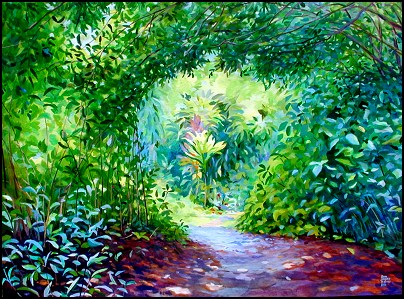 All right!! Finished. Can you see the changes made from day 6? It's another 2 hours work. |
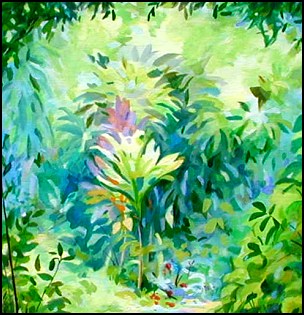 I made this detail to show the lightest Yellow in this painting, one I rarely use.
|
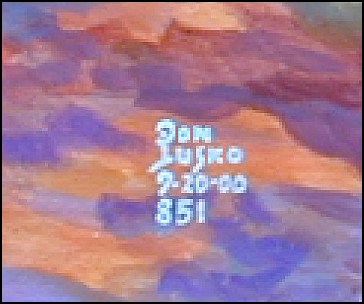 I sign with my name, date and Painting Number. The perfect signing brush is a 1/2 long red sable, #1.
|
| Now what are the important color oppositions that make this painting?
Ultramarine Blue and Yellow. (dark yellow is Burnt Umber, use it for all warm dark yellows before adding Ultramarine Blue),
|
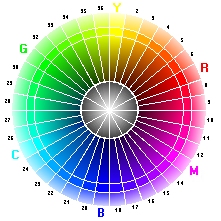
Open a new window for the matching tube
|



